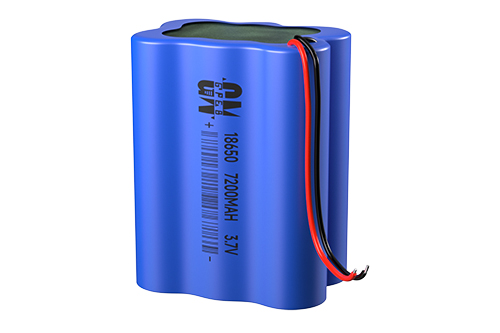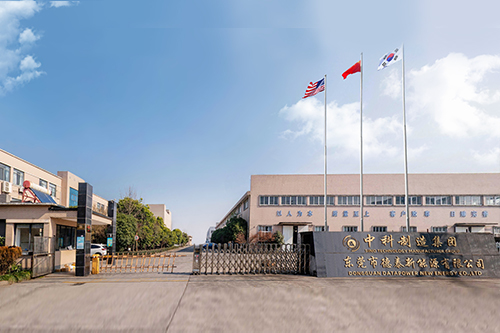Lithium battery protection circuit working principle, lithium battery
protection circuit design. The reason why lithium battery (rechargeable type)
needs protection is determined by its own characteristics. Since the material of
the lithium battery itself determines that it cannot be overcharged,
overdischarged, overcurrent, short-circuited, or charged and discharged at
ultra-high temperatures, lithium batteries always appear with a delicate
protective board and a current fuse.
Lithium battery protection circuit working principle
The protection function of lithium batteries is usually completed by the
protection circuit board and PTC. The protection board is composed of electronic
components. It accurately monitors the voltage of the battery core and the
current of the charge and discharge circuit at all times in an environment of
-40°C to +85°C, and controls it in a timely manner. On and off of the current
loop; the main function of PTC is to protect the battery in high temperature
environments and prevent battery combustion, explosion and other vicious
accidents.
The protection circuit usually consists of control IC, MOs switch tube,
fuse, resistor, capacitor and other components, as shown in Figure 2. Under
normal circumstances, the control IC output signal controls the MOs switch tube
to conduct, so that the battery core is connected to the external circuit. When
the battery core voltage or loop current exceeds the specified value, it
immediately controls the MOS tube to turn off to protect the battery core.
Safety.
1. Normal state
Under normal conditions, the "CO" and "DO" pins of N1 in the circuit both
output high voltage, and both MOSFETs are in the on state. The lithium battery
can be charged and discharged freely. Since the on-resistance of the MOSFET is
very small, usually Less than 30 milliohms, so its on-resistance has little
impact on the performance of the circuit. In this state, the current consumption
of the protection circuit is μA level, usually less than 7μA.
2. Overcharge protection
The charging method required for lithium batteries is constant
current/constant voltage. In the early stage of charging, constant current
charging is used. As the charging process progresses, the voltage will rise to
4.2V (depending on the positive electrode material, some batteries require a
constant voltage value of 4.1V) , switch to constant voltage charging until the
current becomes smaller and smaller.
During the charging process of the battery, if the charger circuit loses
control, the battery voltage will continue to be charged with constant current
after it exceeds 4.2V. At this time, the battery voltage will continue to rise.
When the battery voltage is charged to exceed 4.3V, the battery chemistry will
Side reactions will be aggravated, causing battery damage or safety issues.
In a battery with a protection circuit, when the control IC detects that
the battery voltage reaches 4.28V, its "CO" pin will change from high voltage to
zero voltage, causing V2 to turn from on to off, thereby cutting off the
charging circuit. The charger can no longer charge the lithium battery, thus
providing overcharge protection. At this time, due to the existence of the body
diode VD2 of V2, the battery can discharge the external load through this diode.
There is still a delay time between when the control IC detects that the battery
voltage exceeds 4.28V and sends the shutdown V2 signal. The length of this delay
time is determined by C3 and is usually set to about 1 second to avoid errors
caused by interference. judge.
3. Over-discharge protection
When the lithium battery discharges the external load, its voltage will
gradually decrease with the discharge process. When the battery voltage drops to
2.5V, its capacity has been completely discharged. At this time, if the battery
continues to discharge the load, the battery will be damaged. permanent
damage.
During the battery discharge process, when the control IC detects that the
battery voltage is lower than 2.3V (this value is determined by the control IC,
different ICs have different values), its "DO" pin will change from high voltage
to zero voltage, causing V1 From on to off, the discharge circuit is cut off, so
that the battery can no longer discharge the load, which plays the role of
over-discharge protection. At this time, due to the existence of the body diode
VD1 of V1, the charger can charge the battery through this diode.
Since the battery voltage cannot be reduced in the over-discharge
protection state, the current consumption of the protection circuit is required
to be extremely small. At this time, the control IC will enter a low power
consumption state, and the power consumption of the entire protection circuit
will be less than 0.1μA. There is also a delay time between the control IC
detecting that the lithium battery voltage is lower than 2.3V and sending the
shutdown V1 signal. The length of this delay time is determined by C3 and is
usually set to about 100 milliseconds to avoid interference. Misjudgment.
4. Overcurrent protection
Due to the chemical characteristics of lithium-ion batteries, lithium
battery manufacturers stipulate that the maximum discharge current cannot exceed
2C (C=battery capacity/hour). When the battery is discharged with a current
exceeding 2C, it will cause permanent damage to the battery or safety issues.
.
During the normal discharge process of the battery to the load, when the
discharge current passes through two MOSFETs connected in series, a voltage will
be generated at both ends due to the on-resistance of the MOSFETs. The voltage
value U=I*RDS*2, RDS is a single MOSFET conduction resistance, the "V-" pin on
the control IC detects the voltage value. If the load is abnormal for some
reason, the loop current increases. When the loop current is large enough to
make U>0.1V (this value is determined by When the control IC determines
(different ICs have different values), its "DO" pin will change from high
voltage to zero voltage, causing V1 to turn from on to off, thereby cutting off
the discharge loop and making the current in the loop zero. Plays the role of
over-current protection.
There is also a delay time between the control IC detecting the occurrence
of overcurrent and sending the shutdown V1 signal. The length of this delay time
is determined by C3, usually about 13 milliseconds, to avoid misjudgment caused
by interference.
5. Short circuit protection
When the lithium battery is discharging the load, if the loop current is so
large that U>0.9V (this value is determined by the control IC, different ICs
have different values), the control IC determines that the load is
short-circuited, and its "DO" pin It will quickly change from high voltage to
zero voltage, causing V1 to turn from on to off, thus cutting off the discharge
circuit and playing a role in short-circuit protection. The delay time of short
circuit protection is very short, usually less than 7 microseconds. Its working
principle is similar to overcurrent protection, but the judgment method is
different and the protection delay time is also different.
Lithium battery protection circuit design
Due to the chemical characteristics of lithium batteries, during normal
use, chemical positive reactions in which electrical energy and chemical energy
are converted into each other are carried out internally. However, under certain
conditions, such as overcharging, overdischarging and overcurrent will cause
internal damage to the battery. A chemical side reaction occurs. When the side
reaction intensifies, it will seriously affect the performance and service life
of the battery, and may produce a large amount of gas, causing the internal
pressure of the battery to rapidly increase and then explode, causing safety
issues. Therefore, all lithium batteries need a protection The circuit is used
to effectively monitor the charging and discharging status of the battery, and
to shut down the charging and discharging circuit under certain conditions to
prevent damage to the battery.
Lithium-ion battery protection circuits include overcharge protection,
overcurrent/short circuit protection and overdischarge protection. They require
high precision in overcharge protection, low power consumption of the protection
IC, high withstand voltage, and zero-volt rechargeability.
Read recommendations:
Aromatherapy
Which of lithium titanate batteries and lithium iron phosphate batteries is better?
Square Lithium - ion Batteries in Emergency Power Supplies
14500 battery Vendor
LR721 battery











































 360° FACTORY VR TOUR
360° FACTORY VR TOUR
 Whatsapp
Whatsapp
 Tel
Tel Email
Email TOP
TOP